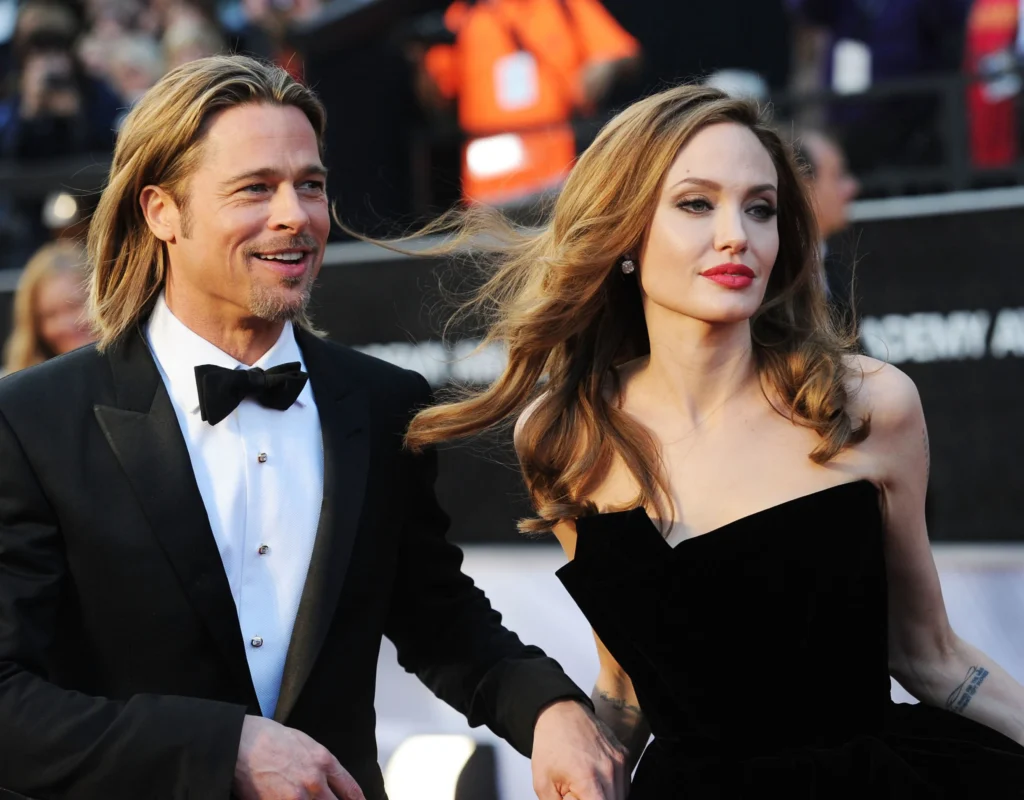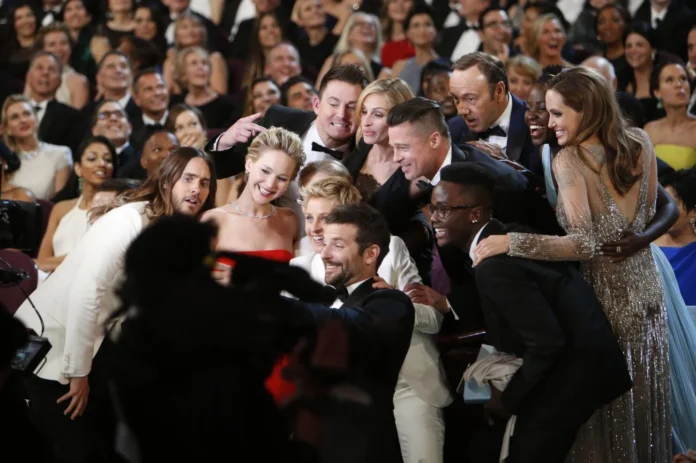The Seminal 2014 Oscars Selfie: A Socio-Cultural Analysis
The 2014 Academy Awards provided a defining instance of modern celebrity culture when host Ellen DeGeneres engineered a seemingly spontaneous, yet meticulously curated, selfie featuring some of the most prominent figures in contemporary cinema. Captured by Bradley Cooper, the image became an unprecedented social media phenomenon, at the time holding the record for the most retweeted photo in history. This singular moment of collective visibility signified an era in which Hollywood’s luminaries coalesced in a display of performative authenticity, reinforcing the industry’s curated image of inclusivity and camaraderie.
Now, as the 2025 Academy Awards loom on the horizon, a retrospective assessment of this image reveals a stark juxtaposition between its ephemeral unity and the long-term trajectories of its participants. Over the past decade, some individuals within the frame have ascended to new heights of cultural relevance, while others have experienced reputational degradation through scandal, legal battles, and shifting industry paradigms. This critical examination interrogates the socio-political evolution of the selfie’s most prominent figures and its broader implications for Hollywood’s dynamic power structures.
Deconstructing the 2014 Oscars Selfie: An Overview of Its Participants
The ensemble composition of the selfie included a blend of Hollywood veterans and burgeoning talent, among them Ellen DeGeneres, Bradley Cooper, Jennifer Lawrence, Kevin Spacey, Brad Pitt, Lupita Nyong’o, Peter Nyong’o, Angelina Jolie, Meryl Streep, Channing Tatum, Julia Roberts, and Jared Leto. Each individual occupied a distinct locus of influence within the entertainment sector at the time; however, their respective career trajectories have since diverged, offering compelling insights into the volatility of celebrity status.
Ellen DeGeneres: The Duality of Public Perception

Ellen DeGeneres, once lauded as a paragon of affability and progressive representation in mainstream media, wielded significant cultural capital through her long-running talk show, The Ellen DeGeneres Show. By 2014, she had firmly entrenched herself as a household name, synonymous with lighthearted humor and philanthropic generosity.
However, the facade of her benevolence was critically dismantled in 2020 when allegations surfaced regarding the toxic work environment behind the scenes of her show. Former employees detailed instances of workplace misconduct, intimidation, and discriminatory practices, effectively destabilizing her carefully curated persona. Despite her public attempts to redress these claims through official statements and structural reforms, the damage to her reputation proved irreparable. The eventual conclusion of her show in 2021, while ostensibly framed as a voluntary decision, underscored the tangible impact of public scrutiny and the fragility of media figures’ constructed images.
Kevin Spacey: The Intersection of Legal Proceedings and Cultural Ostracization

Kevin Spacey, once regarded as one of the most formidable actors of his generation, experienced an acute fall from grace following the onset of the #MeToo movement. In 2017, actor Anthony Rapp’s allegations of Spacey’s inappropriate advances at the age of 14 catalyzed a cascade of similar accusations from multiple individuals. The immediacy of industry backlash was pronounced: Spacey was summarily removed from Netflix’s House of Cards, a flagship production in which he had played a central role, and was digitally replaced in Ridley Scott’s All the Money in the World.
While several of the legal cases against Spacey culminated in acquittals, his career has remained irrevocably impacted by the cultural and institutional responses to his alleged misconduct. Despite his legal exoneration in specific instances, his absence from mainstream cinema exemplifies the broader discourse surrounding accountability, rehabilitation, and the limits of redemption in the entertainment industry.
Brad Pitt & Angelina Jolie: The Deconstruction of Hollywood’s Idealized Power Couple

Brad Pitt and Angelina Jolie epitomized Hollywood’s idealized narrative of romance and glamour, particularly in the aftermath of their collaboration on Mr. & Mrs. Smith (2004). The announcement of their marriage in 2014 coincided with the very Oscars ceremony that produced the iconic selfie, reinforcing their status as entertainment royalty.
However, their subsequent separation in 2016 precipitated one of the most publicized legal and personal disputes in recent history. Allegations surfaced regarding Pitt’s alleged abusive behavior during a private flight with their children, leading to legal investigations, although formal charges were never pursued. In addition to the contentious custody battle, the duo engaged in prolonged litigation over joint business ventures, particularly their co-ownership of the Château Miraval winery. By 2023, their divorce proceedings had reached a formal resolution, though the ramifications of their fractured familial dynamic persist, with several of their children electing to disassociate from Pitt’s surname—a symbolic gesture of estrangement.
The Evolving Career Trajectories of the Selfie’s Remaining Participants
Beyond the high-profile controversies, several other figures within the selfie have navigated the industry’s shifting landscape with relative success:
- Bradley Cooper has cemented his status as a multi-hyphenate talent, achieving critical acclaim for his directorial efforts in A Star Is Born and Maestro.
- Jennifer Lawrence experienced a temporary professional hiatus but has since reemerged with performances in Causeway and No Hard Feelings, signaling a recalibration of her career trajectory.
- Lupita Nyong’o has continued to ascend as a cinematic powerhouse, particularly through her contributions to the Black Panther franchise.
- Jared Leto has expanded his artistic repertoire, balancing his acting career with his endeavors as the frontman of Thirty Seconds to Mars.
- Meryl Streep, Channing Tatum, and Julia Roberts have maintained consistent professional visibility while strategically avoiding reputational pitfalls.
The Enduring Cultural Significance of the Selfie
While the 2014 Oscars selfie was initially perceived as a lighthearted testament to Hollywood’s camaraderie, its retrospective analysis reveals a far more complex reality. The image, frozen in time, inadvertently serves as a case study in the transient nature of fame, the shifting tides of public perception, and the sociopolitical forces that shape the entertainment industry.
Over the past decade, the proliferation of digital media and the intensification of accountability culture have altered the power dynamics within Hollywood, rendering the maintenance of an unblemished public persona increasingly precarious. The #MeToo movement has recalibrated industry norms, social media has amplified the immediacy of backlash, and streaming services have redefined the mechanisms of celebrity relevance.
As the 2025 Academy Awards approach, the selfie stands as both a relic of a bygone era and a cautionary emblem of Hollywood’s unpredictable terrain. The careers it encapsulated have diverged dramatically—some enduring, others faltering—demonstrating that in the realm of entertainment, permanence is an illusion, and reinvention is the only constant.


